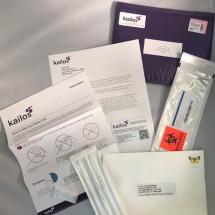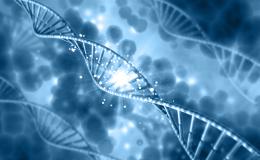Tamoxifen Discontinuation May Increase Mortality in CYP2D6 Ultrarapid Metabolizer Breast Cancer Patients
The goal of pharmacogenetics in any disease treatment is to tailor the best therapeutic intervention for each individual patient based on their unique genetics, and the stakes are rarely greater when it comes to the treatment of cancer. Recently, it was hypothesized that CYP2D6 ultrarapid metabolizer (UM) breast cancer patients may have a better, or at least no worse, response to standard tamoxifen therapy than normal metabolizers (NMs).1 In order to investigate this hypothesis, a recent study from the Journal of Clinical Oncology analyzed tamoxifen side effects, drug discontinuation and disease mortality for all four CYP2D6 metabolizer genotypes (poor metabolizer = PM, intermediate metabolizer = IM, NM and UM) in a cohort of 1,309 breast cancer patients.2 Surprisingly, the study revealed that the CYP2D6 UM group prognosis was worse than NMs, and importantly, the investigators found a critical role for pharmacogenetic testing in improving the disease prognosis for this subset of patients.

Tamoxifen is a commonly prescribed selective estrogen receptor modulator (SERM) adjuvant therapy for breast cancer that decreases breast cancer mortality by 31%.3 Tamoxifen is activated by CYP2D6 (cytochrome p450 2D6) to generate two metabolites, 4-OH-tamoxifen and endoxifen, that possess greater binding affinity to the estrogen receptor than the precursor molecule.4 Common side effects of tamoxifen include hot flashes, night sweats, nausea, mood swings and depression. Interestingly, the Journal of Clinical Oncology study we highlight here found a statistically significant increase in the proportion of CYP2D6 UM patients using antinauseants, anxiolytics and hot flash medications compared to all other metabolizer groups, suggesting UMs were especially prone to tamoxifen side effects. Unsurprisingly, the investigators also found a statistically significant increase in the proportion of CYP2D6 UMs that discontinued tamoxifen therapy within 90 days of initiating therapy compared to other CYP2D6 metabolizers, presumably due to an increased therapeutic level of endoxifen and an increase in adverse side effects.
This higher proportion of UM patients discontinuing tamoxifen therapy is likely associated with the 4.52 mortality hazard ratio (HR) of CYP2D6 UMs compared to NMs found in the study. Additionally, the study revealed a 2.59 mortality HR between CYP2D6 PMs and NMs, which the authors suggest may be due to suboptimal tamoxifen therapy in the PM group. Based on these results, the authors recommend closely monitoring the therapeutic levels of endoxifen in CYP2D6 UMs to maintain the accepted therapeutic level of 35nmol/L or more, as therapeutic levels of endoxifen can reach levels of 80nmol/L in UMs.5 While the results of the study have yet to be confirmed, the data suggests that increased levels of endoxifen in CYP2D6 UMs increase the likelihood of adverse side effects, tamoxifen discontinuation and a poorer disease prognosis.
The study highlighted here underscores the critical role pharmacogenetics serves in optimizing tamoxifen therapy for CYP2D6 UMs by minimizing adverse drug reactions and lowering tamoxifen discontinuation rates. Importantly, the proportion of CYP2D6 UMs in the population is estimated to be 4.6% in the Americas, 3.1% in Europe and 21.2% in Oceania,6 accounting for a sizable share of the patient population. Interestingly, it appears the initial hypothesis suggesting a positive (or neutral) effect of increased tamoxifen metabolism in UMs1 failed to consider how increased therapeutic doses of tamoxifen could result in a parallel increase in adverse tamoxifen side effects and decreased therapy tolerance.
The Kailos Genetics InspexionTM panel provides comprehensive genetic testing and analysis of 19 genes, including CYP2D6, that are directly involved in the metabolism of many different drugs. Our CLIA-certified lab utilizes next generation sequencing (NGS) in concert with our TargetRichTM proprietary workflow to sequence and assess the metabolizer status of each gene, furnishing physicians with the data required to provide the most informed treatment options to their patients.

Sample DNA is extracted from a buccal cell swab collection kit, which can be administered on-site or by the patient in the comfort of their own home, making testing simple, easy and painless. Testing is completed in about two weeks, and results are released to the physician to guide future treatment. If test interpretation assistance is required, Kailos Genetics has partnered with genetic counseling service providers to facilitate that relationship. At Kailos, we understand that precision medicine is the safest and most effective medicine.




